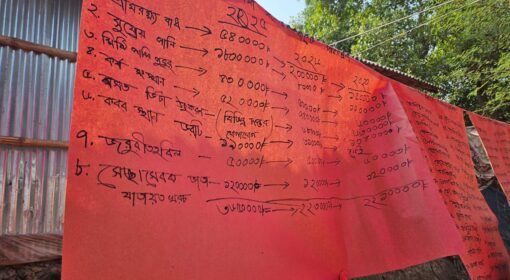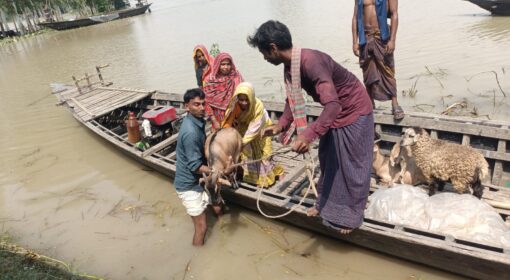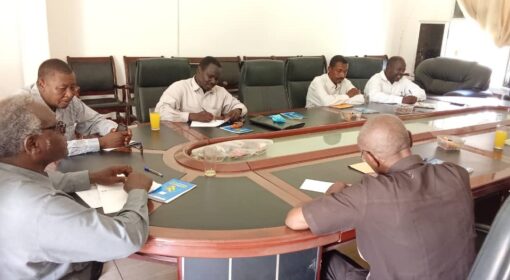By FRIENDSHIP, Shaheberalga
This blog is part of a dossier on locally-led adaptation, featuring insights and lessons from the Reversing the Flow (RtF) program. RtF empowers communities in Bangladesh, Burkina Faso, Ethiopia, Kenya, and Sudan to build climate resilience through direct funding and a community-driven, landscape approach.
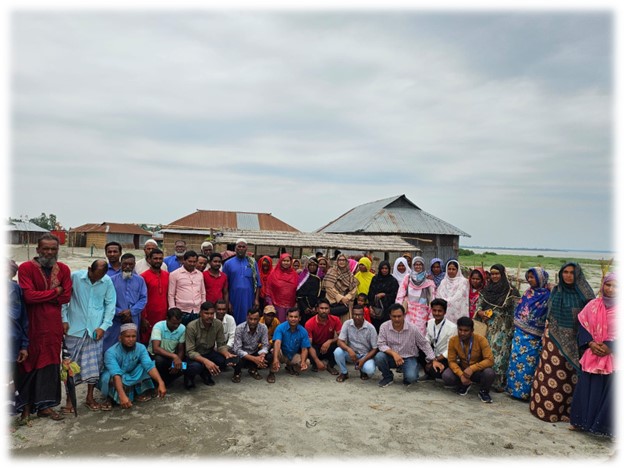
On May 15, 2025, the sun rose over Saheber Alga Union, Ulipur, Kurigram, as thirty members from ten Community Implementation Committees (CICs) gathered for a transformative exposure visit to the Gujimari Char raised plinth. This cornerstone of the Resilience through Friendship (RtF) project isn’t just a structure, it’s a defiant stand against the floods and river erosion that plague these climate-vulnerable communities. With a freshwater reservoir at its heart, surrounded by homes, six tube wells, six latrines (one disability-friendly), two community centers, and solar lamp posts, the plinth is a lifeline for twenty-five families and a shelter for more during disasters.
The visit was an inspiring exchange of ideas and experiences led by Md. Ambar Ali, the passionate President of the Gujimari CIC. Joining this enriching learning journey were Shaira Rahman, the RtF project focal from Friendship and Mst. Jannatul Naim from MetaMeta (RVO), came to witness this powerful example of community resilience. The goal? To showcase how the determination and ingenuity of a local community can overcome nature’s challenges and spark inspiration for others to do the same.
Elevating Local Voices: A Hero’s Journey of Sacrifice and Adaptation
As the visitors stepped onto the plinth, Md. Ambar Ali greeted them with a story that hit like a monsoon gust. “I’ve lost my home thirty-one times to the river,” he said, his voice steady with resolve. “I gave my land for this plinth not as a loss, but as a gift of hope.” His sacrifice turned a vulnerable patch of earth into a fortress where families can live securely, their livestock safe, and their futures no longer at the mercy of floods. “This is our stand,” he declared, “a place where we can plan, dream, and rebuild without starting from nothing.”
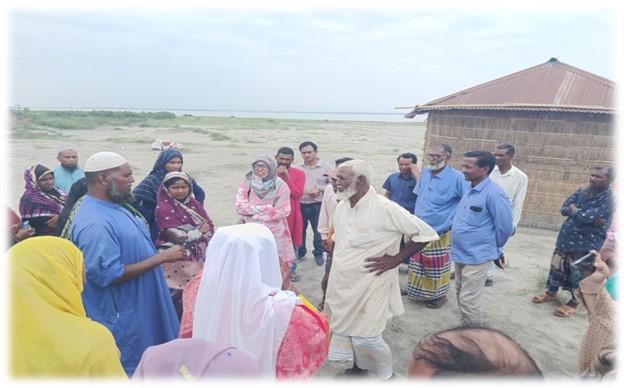
Ambar Ali walked the group through the plinth’s clever design, pointing out the reservoir that ensures clean water, the solar lights that pierce the night, and the community centers that double as schools during floods. His pride was infectious, sparking a flurry of questions from the visiting CICs, each eager to learn how they could replicate this model.
A Lively Exchange of Ideas
The air buzzed with curiosity as CIC members fired off questions, each answer revealing the plinth’s practical brilliance and the community’s unbreakable spirit:
- Most Rebeka Khatun (Purbo Mekurer Alga CIC): “How many times has the river struck here?” Answer: “Seven,” Ambar replied, underscoring the plinth’s necessity.
- Md. Samad Ali (Uttor Namajer Char CIC): “How high was last year’s flood?” Answer: “Five feet our plinth stands taller than that.”
- Most Kolpona Akhter (Dokhin Namajer Char CIC): “How many can take shelter?” Answer: “Twenty, with plans to grow as we learn.”
- Md. Rubel Islam (Char Sonapur CIC): “Why two community centers?” Answer: “One’s for gatherings, the other’s a school when floods hit our kids keep learning.”
- Md. Jahangir Alam (Majer Alga CIC): “Any grants from outside?” Answer: “Not a dime. This is our sweat and our land.”
- Md. Abed Ali (Kajiar Char CIC): “How do you maintain it?” Answer: “Families and the committee work together to keep it strong.”
- Md. Abul Mojid (Uttor Para CIC): “Where’d the materials come from?” Answer: “Sand from the canal, grass from our fields local and tough.”
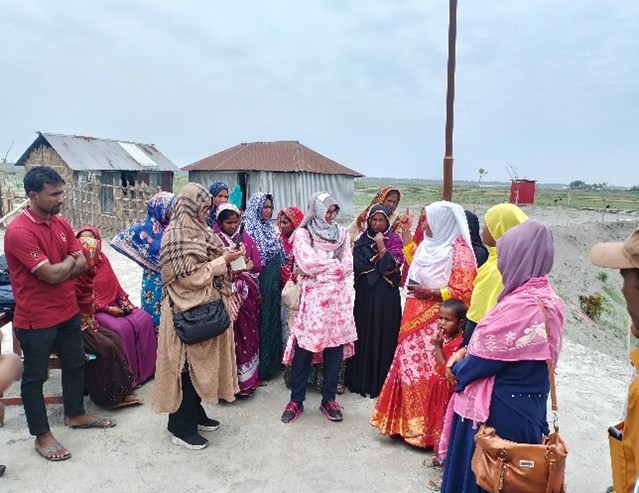
Each question peeled back another layer of the project’s ingenuity, from sourcing local materials to ensuring long-term maintenance. The visitors scribbled notes, their excitement palpable as they envisioned similar plinths in their own communities.
A Ripple Effect of Inspiration
The Gujimari plinth isn’t just a structure it’s a spark. The visiting CIC members left with more than answers; they carried a blueprint for resilience rooted in Locally Led Adaptation (LLA). “We won’t have to flee anymore,” Ambar told them. “This plinth gives us a future we can build on, and you can do the same.” His words lit fire, as representatives from Purbo Mekurer Alga to Uttor Para began envisioning their own LLA-driven paths to safety.
The exposure visit showcased the transformative power of community-driven, LLA-informed solutions, amplified by the support of the RtF project. “This is what hope looks like,” Ambar said, gesturing to the plinth’s sturdy rise against the river’s edge. “It’s not just saving us it’s showing others what’s possible through local leadership.”
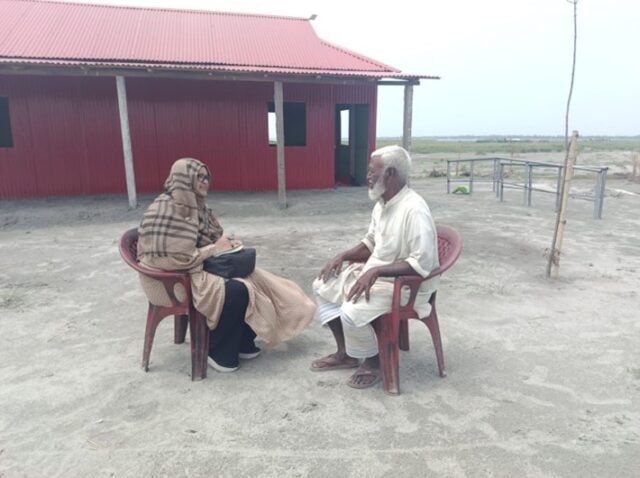
Jannatul Naim, a knowledge partner from MetaMeta (RVO), actively joined the visit, engaging deeply with community members. She shared valuable insights not only on Locally Led Adaptation (LLA) but also on the role of livestock management and women’s leadership in driving adaptation at the grassroots. Her thoughtful exchanges enriched the learning experience and broadened perspectives on inclusive resilience.
